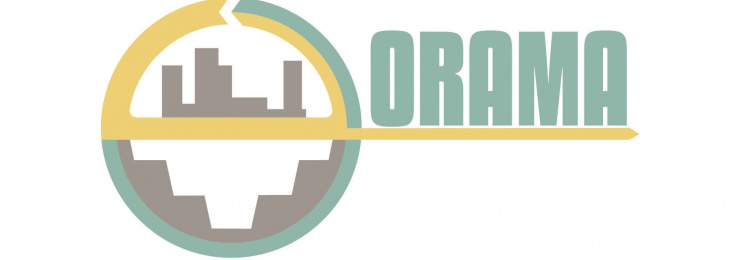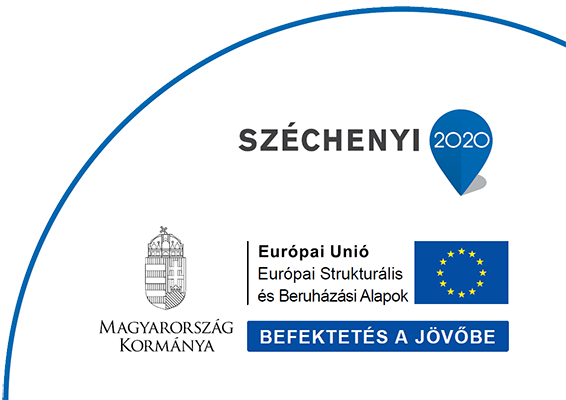
On the 7 and 8 th of March 2019 was held the XII. “Stone-Gravel Days” Annual Mining Conference, where the Mining and Geological Survey of Hungary (MBFSZ) with the Silicate Industry Association (SZTE) organized a separate section called ORAMA Symposium.
37 participants from authorities, universities and research institutions, companies and other experts dealing with primary and secondary raw materials and its relevant data management and data service joined the ORAMA session.
Participants from the MBFSZ: Dr. Zoltán Horváth, Mrs Gombár Gizella Forgács, Katalin Szabó, Géza Tivadar Szebényi, Péter Prakvalfi, Miklós Mednyánszky and Miklós Szabó.
The background of the Separate Section: EU-funded projects support the EU's raw materials objectives, which are further elaborated in the Strategic Implementation Plan of the European Innovation Partnership on Raw Materials. The most important goals are technology and non-technology, regulatory-data-supply, international relations developments, to provide the supply of primary and secondary raw materials of EU Member States and Europe and to reduce import dependency. The development of research-exploitation-recycling-education is also a key factor for growth and job creation, but the sustainability goals and special raw materials (critical raw materials) are also given particular attention by researchers, experts, authorities, decision-makers, industry and NGOs. ORAMA, the project that deals with data optimization of primary and secondary raw materials at European level, has provided an opportunity to present a number of EU-funded projects to discuss the results with a view to better evaluating the data optimization of raw materials from the Survey (data manager and data provider) or entrepreneurial reporting provider. It is important to utilize raw material data in research and education and proper communication of recovery.
The chairman was Zoltán Cseh vice president of the Hungarian Mining Association, managing director of Colas Északkő Kft.
Dr. Zoltán Horváth on behalf of Dr. Tamás Fancsik, the president of Mining and Geological Survey of Hungary greeted the audience on behalf of the mining administration. He stressed the activity of the MBFSZ in domestic and international raw material forums and projects, which contribute to the development of up-to-date administration.
From the side of industry, Dr. Gálos Miklós , a professor of the Budapest University of Technology and Economic, greeted the audience and stressed the importance of building administration and the importance of testing modern building materials.
Dr. Zoltán Horváth (MBFSZ) introduced the European raw materials approach with goals and processes (RMI, EIP SIP, working groups), emphasizing that besides primary raw materials secondary raw materials, circular economy, battery metals research, supply, and the related innovations are decisive in the emerging raw material approach.
Dr. Botond Kertész (COLAS Északkő Kft.) introduced the steps of development of an international guidance for mining residues. It is important to record the relevant data on both the entrepreneurial and the official side.
Dr. Zoltán Horváth (MBFSZ) presented the EU-funded ORAMA and COST-MINEA projects in detail, and also referred to the MINLAND project. The ORAMA project is working on European raw material data optimization with experts from the Finnish, British, French, Danish, Slovenian and Norwegian geological surveys. They are also dealing with ores, construction, industrial minerals and various types of waste. The MINLAND project examines the relationship between raw material access and land use planning in Europe, identifying good practices.
Dr. Margit Balázs (Bay Zoltán Research Institute) and Alexandra Németh presented their research projects, where various data are generated. Chemistry, biotechnology, automotive, secondary raw materials recovery, rare earth extraction, platinum metals, red mud utilization, research institute network, bio-methahydrology, bioleaching, biosorption, residual utilization, iron oxide, magnetite, Sc recovery, mining recycling, environmental risk reduction (at the same time as the metal recovery), they also talked about EIT KIC. Knowledge triangle: research, education, business.
Dr. József Faitli (University of Miskolc) presented two projects (AMIR, IN4SOC, OpESEE) in connection with an international Master's program. Geopolymers (thermal insulation, cement) were also referred to as innovative products.
Prof. Andrea Mindszenty talked about the rare earth potential of bauxites and red mud in the Southeast European region. The purpose of the preliminary study is to identify potential areas and outline element content. Natural enrichment is important: here the weathering. Former tropical weathering sections, karst bauxite are prestigious areas. There are not only biological and fungi methods. There is little economic efficiency. Not all bauxites have RFFs. Data collection and proper data handling is important.
Old data must be checked. Bauxite in Villány Mountains is suitable. Be, Pb, Ni, L, Y, Mn is enriching descending down in Nagyharsány. They focus on Transdanubian bauxites in the research.
Dispute: How can EU project results be utilized in domestic research and administration?
Summary/Conclusions:
- Data collection and a proper data management for primary and secondary resources is crucial to support sustainable raw material management.
- Both the supply and demand sides need to be known in order to support sustainable raw materials management.
- In many cases it is important to return archive data that may be used for daily works.
- Additional research is important to feed proper data into databases for primary and secondary resources.
- These issues needs to be addressed in education as well.
- Innovative technologies support raw materials management.
- Guidelines should be developed in order to have sufficient and proper data.
These types of consultations are useful for stakeholders, many synergies may be identified.

